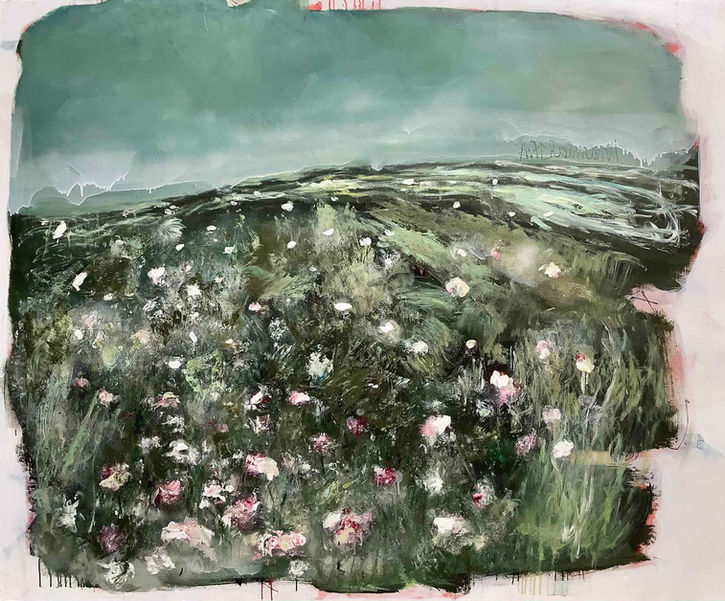
ISABEL AGUERA

Isabel Aguera, a graduate of the Ecole Nationale des Beaux-Arts in Paris, has been painting for over thirty years. Her work having quickly caught the eye of collectors and foreign agents, her works travel around the world and are presented in numerous fairs and galleries outside our borders. From then on, she devoted herself entirely to her artistic practice and nourished herself with numerous travels, having a predilection for this contemporary Babylon that is New York where she mixes with the proliferation of the various underground artistic scenes. The front line between reality and imagination is often at work in Isabel Aguera’s work, hence a central figurative element which, by her own admission, allows her to keep in touch with the primary reality which is given to our retina. From this element, a bubbling without constraints then takes a road made up of chances and accidents in order to bring out a pictorial language outside the marked regions of language and narration. During the act of creation, a painting is born that tells itself as much as it tells us.
BIOGRAPHY
Investigating the territories of her memory, and prospecting fantasized universes where invention and the discovery of new writings are the driving force, Isabel Aguera always keeps composition as a breadcrumb trail in her plastic approach; the arrangement of each of his works resulting from a preparatory work consisting of countless sketches and sketches where the gesture is guided by the desire for a line that would be sufficient in itself, almost disconnected from all thought, where painting and writing coexist. From these tests, like an architectural work, the foundations are then laid for the creative changeover necessary for the realization of her paintings. Far from locking herself into a marked and routine creative process, Isabel Aguera compels herself to push back any comfort zone that often cuts off regeneration and possible mutations, thus seeking to reinvent herself by prospecting territories conducive to new writing. From these often arise freedom, this dynamic necessary for exploration where cross roads and risk-taking are constant. Not caring about the gaze of the viewer or the result, the journey that leads to the work is as important as the finished work itself.
Romain Grieco, Anthropart

